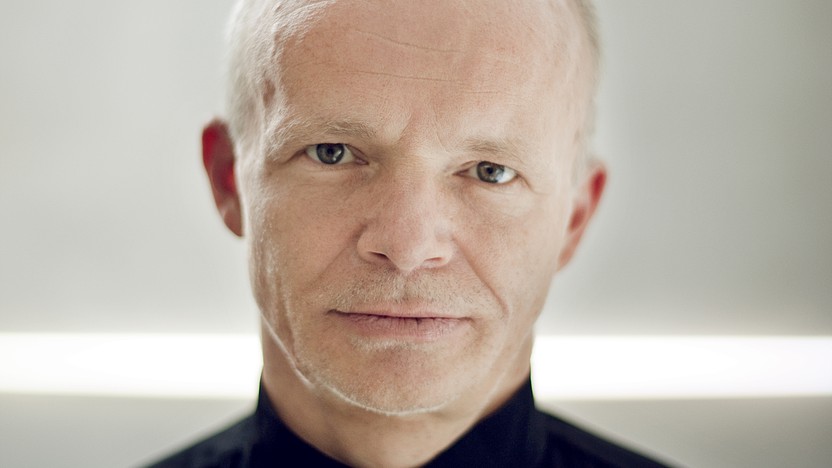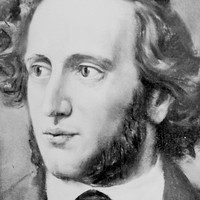Thomas Zehetmair Conducts Beethoven’s Seventh Symphony


 Watch Video
Watch Video
In medieval folklore, Melusina was a beautiful girl cursed to take the form of a mermaid one day each week. She married the knight Reymund, and forbade him from ever seeing her on Saturdays. He betrayed her one fateful day, spying on her in the bath, and she disappeared forever from sight of humans, although the sound of her wailing remained.
Franz Grillparzer created a stage version of the Melusina folktale in 1823, and Conradin Kreutzer developed that play into an opera in 1833. Mendelssohn heard Kreutzer’s opera and hated it, but he did the tale justice when he crafted a concert overture inspired by Melusina for the Philharmonic Society in London. The music outlines the basic contours of the story, with a rolling “water” theme in F major that represents the secret mermaid, and a turbulent “galloping” theme in F minor that suggests Reymund’s intrusion during her bath.
Aaron Grad ©2013
 Watch Video
Watch Video
My Violin Concerto is in two movements of contrasting character. The first movement, begins with a slow introduction and eventually transitions into a scherzando section. The opening explores the violin’s lyrical and expressive qualities as it hovers above an ethereal string and percussion texture. The middle section of the movement is a dynamic scherzo of sorts, almost becoming a separate movement in itself before the opening finally returns to conclude the movement.
The second movement moves freely back and forth between frenetic, pulse-oriented music and freely slow, non-pulsed music. These slower sections contain lyrical quarter-tone pitch-bending in the violin, and this serves as the primary motive in this section. Eventually, the fast music takes over and leads to a fiery cadenza.
Pierre Jalbert ©2017
 Watch Video
Watch Video
Western classical music is frequently tied to politics, as was the case with Ludwig van Beethoven and several of his symphonies. Most noteworthy, perhaps, was Beethoven’s dedication of his third symphony to Napoleon, which the composer erased upon learning that Napoleon had declared himself emperor. Beethoven’s Symphony No. 7 is also often interpreted as a musical confrontation with Napoleon, whose troops had recently occupied Vienna.
Beethoven composed Symphony No. 7 between 1811 and 1812, at the same time Napoleon was planning his campaign against Russia. The piece was dedicated to Count Moritz von Fries, an Austrian patron of the arts, and the Russian Empress Elisabeth Aleksiev. In December 1813, Beethoven conducted the premiere at the University of Vienna. The event was a charity concert for soldiers wounded in the Battle of Hanau, and Beethoven remarked at the concert’s opening that “we are moved by nothing but pure patriotism.”
The first movement of Symphony No. 7 begins with a long, slow introduction composed of ascending scales. This introduction transitions to the Vivace section through a series of sixty-one repetitions of the pitch E. Dance-like rhythms permeate the entire symphony, including the first theme of the Vivace section. The last few minutes of the movement feature a coda, which contains a remarkable passage of a two-measure motive that is repeated ten times in a row. This repeated motive occurs at the same time as the other instruments play a four-octave pedal point on the pitch E.
So popular that it was encored at the premiere, the second movement of Symphony No. 7 is often performed today as a stand-alone piece. The movement is in ternary form, or three large sections. The first and third sections are composed of similar thematic material and feature a repeated ostinato pattern of a quarter note, two eighth notes, and two quarter notes. These two sections are in the key of A minor, and Beethoven demonstrates his skill with imitative counterpoint in the third section, which is structured as a fugato. The contrasting middle section in A major contains a warm melody in the clarinets, which is accompanied by triplets in the violins.
A scherzo is a musical joke in which humor is created through compositional devices such as unequal phrase structures, disjunct rhythms, alternating meters and unexpected harmonies. Beethoven employs most of these techniques in the third movement of Symphony No. 7, which is divided into five large sections alternating ABABA. The A sections are rhythmically vigorous and composed of jagged, irregular phrases. The B sections contain quotations of the Austrian pilgrims’ hymn.
Symphony No. 7 closes with a movement full of fiery, relentless passion and perpetual motion. The first theme of the movement is a modified version of the instrumental ritornello to Beethoven’s own arrangement of the Irish folk song “Save me from the grave and wise.” Symphony No. 7 was regarded by Beethoven as one of his best compositions, and a newspaper account of an early performance recalled that the “applause rose to the point of ecstasy.”
Paula Maust ©2022
Get driving directions and find nearby parking.
Find dining options close to the venue.
View seating charts to find out where you'll be seating.
SPCO concerts are made possible by audience contributions.
For exclusive discounts, behind-the-scenes info, and more:
Sign up for our email club!
